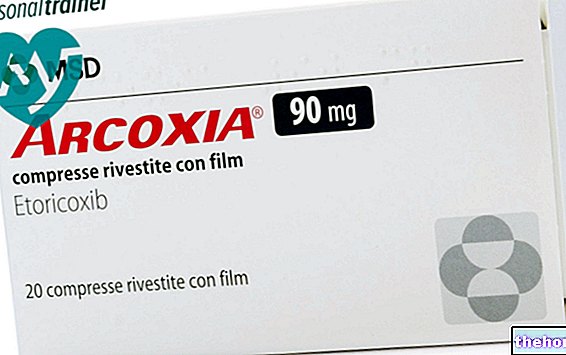Active ingredients: Thietylperazine (thietylperazine maleate)
Torecan 6.5 mg coated tablets
Torecan 6.5 mg suppositories
Indications Why is Torecan used? What is it for?
PHARMACOTHERAPEUTIC CATEGORY
Phenothiazine derivative, with antiemetic activity.
THERAPEUTIC INDICATIONS
Nausea and vomiting induced by antiblastic chemotherapy agents, radiotherapy, toxic agents and surgery.
Contraindications When Torecan should not be used
Hypersensitivity to the active substance, to any of the excipients or to phenothiazines.
Comatose states and severe states of depression.
Disorders of hematopoiesis.
Liver diseases.
Children under the age of 15 (see "Precautions for use" and "Undesirable effects").
Pregnancy (see "Special Warnings - Pregnancy")
Breastfeeding (see "Special Warnings - Breastfeeding".)
Precautions for use What you need to know before taking Torecan
As with all neuroleptics, treated patients should be kept under direct medical supervision, especially those who previously exhibited abnormal sensitivity to phenothiazines. (see "Undesirable Effects").
Torecan is contraindicated in children under 15 years because this age group is particularly prone to extrapyramidal side effects and seizures (see "Contraindications" and "Undesirable effects").
Particular attention should be paid to patients with pheochromocytoma or mitral insufficiency for any hypotensive effects that may occur. Hypotensive episodes with Torecan are rare (see "Undesirable Effects"); however, if they occur, they can be controlled with norepinephrine, angiotensin or phenylephrine (not adrenaline, whose action can be antagonized by phenothiazines).
A noticeable rise in body temperature can be the expression of an idiosyncratic reaction and therefore treatment should be stopped.
Phenothiazines can increase the state of muscle stiffness in individuals predisposed to or already suffering from Parkinson's disease or Parkinson-like forms, or other motor disorders.
In patients with renal insufficiency and in patients with Central Nervous System disorders, the product can induce neurotoxic manifestations, at doses higher than those recommended.
Long-term treatment
In rare cases, tardive dyskinesia has been observed following long-term treatment with Torecan in elderly patients (see "Undesirable effects"). Patients in this age group should therefore be treated for the shortest possible period and should be closely monitored for the occurrence of harmful neurological events.
Post-operative phase
In case of administration of Torecan during the post-operative phase of anesthesia, the possible occurrence of central nervous system depression and / or agitation must be taken into account.
Hepatic impairment
Caution is advised in patients with mild, moderate and severe hepatic insufficiency or with cirrhosis (see "Dose, method and time of administration" and "Undesirable effects").
In patients who smoke 20 or more cigarettes a day, prolonged use of Torecan 6.5 mg coated tablets may increase the risk of developing lung cancer.
Interactions Which drugs or foods can modify the effect of Torecan
Drugs that act on the S.N.C.
Tell your doctor or pharmacist if you have recently taken any other medicines, even those without a prescription.
The association with other psychotropic drugs requires particular caution.
Since phenothiazines can accentuate the depressing action on the central nervous system of opiates, antihistamines, analgesics, benzodiazepines and barbiturates, the dosage of these drugs, if used at the same time, must be suitably adjusted.
Sensitivity to alcohol, atropine and phosphoric insecticides is accentuated during therapy with phenothiazines.
Torecan is to be used only if strictly necessary and with extreme caution in association with the depressant drugs the S.N.C. indicated above.
CYP2D6 inhibitors
Concomitant administration of CYP2D6 inhibitors (such as fluoxetine and quinidine) may increase plasma concentrations of thethylperazine.
Anticonvulsants
Torecan may decrease the efficacy of anticonvulsants due to the epileptogenic properties of phenothiazines.
In conjunction with the administration of Torecan, if the patient is being treated with an anticonvulsant, a higher dose of this drug may be required.
Warnings It is important to know that:
Pregnancy
Ask your doctor or pharmacist for advice before taking any medicine
There are only limited data on the use of thietylperazine in pregnant patients. As a precautionary measure, Torecan should not be used during pregnancy.
Feeding time
Phenothiazines are excreted in breast milk, therefore Torecan should not be used during lactation (see "Contraindications").
Fertility
Fertility of male rats was not adversely affected by thiethylperazine treatment. Effects on the pregnancy rate of female rats were observed only at exposures considered sufficiently in excess of the maximum human exposure, indicating little relevance to clinical use.
Effects on ability to drive and use machines
Patients should be advised that adverse central nervous system reactions such as somnolence and extrapyramidal symptoms (dystonia, oculogyric crisis, muscle spasms) may occur during treatment with thietylperazine. Therefore, caution should be advised when driving a vehicle or using machinery.
Important information about some of the excipients
Torecan coated tablets contain lactose and sucrose so if you have been diagnosed by your doctor with intolerance to some sugars, contact your doctor before taking this medicine.
Due to the presence of beta-carotene in the composition, prolonged use of Torecan coated tablets may increase the risk of developing lung cancer in heavy smokers (20 or more cigarettes per day).
Dosage and method of use How to use Torecan: Dosage
DOSAGE
General population
1 coated tablet or 1 suppository 1 to 3 times a day.
Special populations
Renal impairment No studies have been performed in patients with renal impairment.
Hepatic impairment
In patients with hepatic impairment taking Torecan in high doses or for a prolonged period of time, liver function should be monitored (see "Precautions for use" and "Undesirable effects").
Pediatric population
Torecan is contraindicated in children under the age of 15 (see "Contraindications", "Precautions for use" and "Undesirable effects").
Senior citizens
Torecan should be used with caution in elderly patients (65 years of age and older) (see "Precautions for use").
METHOD OF ADMINISTRATION
The coated tablets should be taken on an empty stomach, only for short periods of time and with large intervals between these periods.
Due to its unpleasant taste, Torecan coated tablets should not be chewed. Torecan suppositories must be well inserted into the rectum. It is recommended to take the suppository after passing stool. Suppositories are not to be taken by mouth. For rectal use only.
Overdose What to do if you have taken too much Torecan
Symptoms:
Numbness, confusional states followed in the most severe cases by coma and loss of reflexes; tachycardia, postural hypotension, collapse; respiratory depression; agitation, acute dystonic reactions, convulsions.
Treatment:
There is no antidote. General supportive measures include gastric lavage followed by administration of activated charcoal and, if necessary, monitoring of cardiovascular and respiratory functions.
Symptomatic treatments:
Acute hypotension: administer plasma expanders; if it is necessary to administer a vasopressor drug (not adrenaline), cardiovascular function should be carefully monitored.
Acute dystonic reactions: administer anti-Parkinson drugs.
Convulsions: administer benzodiazepines.
In case of accidental ingestion / intake of an excessive dose of Torecan, notify your doctor immediately or go to the nearest hospital
Side Effects What are the side effects of Torecan
Undesirable effects observed after administration of phenothiazines
Like all medicines, Torecan can cause side effects, although not everybody gets them
Thietylperazine (Torecan) is a phenothiazine derivative. The physician should be aware that the following side effects have occurred with one or more phenothiazines:
- Allergic reactions: with phenothiazines they have been reported exceptionally and characterized by localized or widespread skin phenomena (more rarely it is idiosyncrasies with fever) such as erythema, pruritus, urticaria, eczema, localized edema, photosensitization phenomena, exfoliative dermatitis. Asthmatic crises are rare.
- Other manifestations: mild insomnia, states of paradoxical excitement, arterial hypotension, tachycardia, dry mouth, nasal congestion, constipation, blurred vision, increased prolactin levels.
- Albeit with extremely low frequency, damage to the liver with jaundice and to the blood crase with agranulocytosis and thrombocytopenia have been described following treatment with phenothiazines.
Undesirable effects observed after administration of Torecan
The following adverse reactions are listed by MedDRA class system / organ.
Within each organ / class, adverse reactions are sorted by frequency, starting with the most frequent reactions. Within each frequency class, adverse reactions are listed in order of decreasing severity. In addition, the frequency category of each adverse reaction is based on the following convention (CIOMS III): very common (≥1 / 10); common (≥1 / 100,
Adverse reactions
Disorders of the immune system
Very rare: Anaphylactic or anaphylactoid reactions (see "Precautions for use")
Nervous system disorders
Rare: Extrapyramidal symptoms *, oculogyric crisis, tardive dyskinesia (see "Precautions for use"), somnolence, dysarthria
Very rare: Neuroleptic malignant syndrome
Cardiac pathologies
Rare: Hypotension (see "Precautions for use")
Very rare: Tachycardia
Gastrointestinal disorders
Rare: Dysphagia
Very rare: Dry mouth
Hepatobiliary disorders
Very rare: Hepatic function abnormalities
Skin and subcutaneous tissue disorders
Very rare: Dermatitis (see "Precautions for" use ")
Musculoskeletal and connective tissue disorders
Very rare: Muscle spasms
* Like other phenothiazine derivatives, Torecan can - although rarely and usually in younger patients - cause extrapyramidal symptoms (oculogyric crisis, difficulty in swallowing and speech, muscle spasms, trismus). These symptoms usually respond promptly to parenteral treatment with an antiparkinsonian agent. In many cases, extrapyramidal symptoms disappear rapidly with drug discontinuation.
Adverse reactions from post-marketing experience
The following adverse reaction was inferred from post-marketing experience with Torecan. As this reaction is reported voluntarily from a population of undefined size, it is not possible to reliably estimate its frequency which is therefore categorized as unknown.
Frequency not known
Skin and subcutaneous tissue disorders
Angioedema
Compliance with the instructions contained in the package leaflet reduces the risk of undesirable effects.
Reporting of side effects
If you get any side effects, talk to your doctor or pharmacist. This includes any possible side effects not listed in this leaflet. Undesirable effects can also be reported directly through the national reporting system at "https://www.aifa.gov.it/content/segnalazioni-reazioni-avverse". By reporting side effects you can help provide more information on the safety of this medicine.
Expiry and Retention
Expiry: see the expiry date printed on the package.
The expiry date indicated refers to the product in intact packaging, correctly stored.
The expiry date refers to the last day of the month.
Warning: do not use the medicine after the expiry date shown on the package.
Medicines should not be disposed of via wastewater or household waste.
Ask your pharmacist how to throw away medicines you no longer use. This will help protect the environment.
Keep this medicine out of the sight and reach of children.
Composition and pharmaceutical form
Coated tablets
1 coated tablet contains:
Active principle:
thietylperazine maleate 10.276 mg (equivalent to 6.5 mg of base)
Excipients: gum arabic, gelatin, talc, stearic acid, corn starch, lactose, sucrose, β-carotene, peanut oil.
Suppositories
1 suppository contains:
Active principle:
thietylperazine maleate 10.276 mg (equivalent to 6.5 mg of base)
Excipients: Lactose monohydrate, solid semisynthetic glycerides.
PHARMACEUTICAL FORM and CONTENT
Torecan 6.5 mg coated tablets: 15 coated tablets
Torecan 6.5 mg suppositories: 6 suppositories
Source Package Leaflet: AIFA (Italian Medicines Agency). Content published in January 2016. The information present may not be up-to-date.
To have access to the most up-to-date version, it is advisable to access the AIFA (Italian Medicines Agency) website. Disclaimer and useful information.
01.0 NAME OF THE MEDICINAL PRODUCT
TORECAN
02.0 QUALITATIVE AND QUANTITATIVE COMPOSITION
Coated tablets
1 coated tablet contains:
Active principle:
thiethylperazine maleate ................................................ ................................... 10.276 mg
(equal to 6.5 mg of thietylperazine base).
Excipients: lactose, sucrose
Suppositories
1 suppository contains:
Active principle:
thiethylperazine maleate ................................................ ................................... 10.276 mg
(equal to 6.5 mg of thietylperazine base).
For the full list of excipients, see section 6.1.
03.0 PHARMACEUTICAL FORM
Coated tablets.
Suppositories.
04.0 CLINICAL INFORMATION
04.1 Therapeutic indications
Nausea and vomiting induced by antiblastic chemotherapy agents, radiotherapy, toxic agents and surgery.
04.2 Posology and method of administration
DOSAGE
General population
1 coated tablet or 1 suppository 1 to 3 times a day.
Special populations
Renal impairment
No studies have been performed in patients with renal impairment.
Hepatic impairment
In patients with hepatic impairment taking Torecan in high doses or for a prolonged period of time, hepatic function should be monitored (see sections 4.4 and 4.8).
Pediatric population
Torecan is contraindicated in children below 15 years of age (see sections 4.3, 4.4 and 4.8).
Senior citizens
Torecan should be used with caution in elderly patients (65 years of age and older) (see section 4.4).
METHOD OF ADMINISTRATION
Due to its unpleasant taste, Torecan coated tablets should not be chewed.
The coated tablets should be taken on an empty stomach, only for short treatment periods and with large intervals between these periods.
Torecan suppositories must be well inserted into the rectum. It is recommended to take the suppository after passing stool. Suppositories are not to be taken by mouth. For rectal use only.
04.3 Contraindications
Hypersensitivity to the active substance, to any of the excipients or to phenothiazines.
Comatose states and severe states of depression.
Disorders of hematopoiesis.
Liver diseases.
Children under the age of 15 (see sections 4.4 and 4.8).
Pregnancy (see section 4.6)
Breastfeeding (see section 4.6)
04.4 Special warnings and appropriate precautions for use
As with all neuroleptics, treated patients should be kept under direct medical supervision, especially those who previously exhibited abnormal sensitivity to phenothiazines (see 4.8).
Torecan is contraindicated in children below 15 years because this age group is particularly prone to extrapyramidal side effects and seizures (see sections 4.3 and 4.8).
Particular attention should be paid to patients with pheochromocytoma or mitral insufficiency for any hypotensive effects that may occur. Hypotensive episodes with Torecan are rare (see section 4.8); however, if they occur, they can be controlled with norepinephrine, angiotensin or phenylephrine (not adrenaline, whose action can be antagonized by phenothiazines).
A noticeable rise in body temperature can be the expression of an idiosyncratic reaction and therefore treatment should be stopped.
Phenothiazines can increase the state of muscle stiffness in individuals predisposed to or already suffering from Parkinson's disease or Parkinson-like forms or other motor disorders.
In patients with renal insufficiency and in patients with central nervous system disorders, the product can induce neurotoxic manifestations, at doses higher than those recommended.
Long-term treatment
In rare cases, tardive dyskinesia has been observed following long-term treatment with Torecan in elderly patients (see 4.8). Patients in this age group should therefore be treated for the shortest possible period and should be closely monitored for the occurrence of harmful neurological events.
Post-operative phase
In case of administration of Torecan during the post-operative phase of anesthesia, the possible occurrence of central nervous system depression and / or agitation must be taken into account.
Hepatic impairment
Caution is recommended in patients with mild, moderate and severe hepatic impairment or with cirrhosis (see sections 4.2, 4.8 and 5.1 - "Special populations").
Important information about some of the excipients
Torecan coated tablets contain lactose, therefore patients with rare hereditary problems of galactose intolerance, the Lapp lactase deficiency or glucose / galactose malabsorption should not take this medicine.
Torecan coated tablets contain sucrose, therefore patients with rare hereditary problems of fructose intolerance, glucose / galactose malabsorption or sucrase isomaltase insufficiency should not take this medicinal product.
Due to the presence of beta-carotene in the composition, prolonged use of Torecan coated tablets may increase the risk of developing lung cancer in heavy smokers (20 or more cigarettes per day).
04.5 Interactions with other medicinal products and other forms of interaction
Interactions to consider
Drugs that act on the CNS
The association with other psychotropic drugs requires particular caution.
Since phenothiazines can accentuate the depressing action on the central nervous system of opiates, antihistamines, analgesics and benzodiazepines and barbiturates, the dosage of these drugs, if used concomitantly, will have to be suitably adjusted.
Sensitivity to alcohol, atropine and phosphoric insecticides is accentuated during therapy with phenothiazines.
Torecan is to be used only if strictly necessary and with extreme caution in association with the depressant drugs the S.N.C. indicated above.
CYP2D6 inhibitors
Concomitant administration of CYP2D6 inhibitors (such as fluoxetine and quinidine) may increase plasma concentrations of thethylperazine.
Anticonvulsants
Torecan may decrease the efficacy of anticonvulsants due to the epileptogenic properties of phenothiazines.
In conjunction with the administration of Torecan, if the patient is being treated with an anticonvulsant, a higher dose of this drug may be required.
04.6 Pregnancy and breastfeeding
Pregnancy
Only limited data are available on the use of thietylperazine in pregnant patients. Animal studies are insufficient to rule out a teratogenic effect of Torecan (see 5.3), and a possible association was found in two observational studies. As a precautionary measure, Torecan it should not be used during pregnancy.
Feeding time
Phenothiazines are excreted in breast milk, therefore Torecan should not be used during lactation (see section 4.3).
Fertility
Fertility of male rats was not adversely affected by thiethylperazine treatment. Effects on the pregnancy rate of female rats were observed only at exposures considered sufficiently in excess of the maximum human exposure, indicating little relevance to clinical use.
04.7 Effects on ability to drive and use machines
Patients should be advised that adverse central nervous system reactions such as somnolence and extrapyramidal symptoms (dystonia, oculogyric crisis, muscle spasms) may occur during treatment with thietylperazine. Therefore, caution should be advised when driving a vehicle or using machinery.
04.8 Undesirable effects
Undesirable effects observed after administration of phenothiazines
Thietylperazine (Torecan) is a phenothiazine derivative. The physician should be aware that the following side effects have occurred with one or more phenothiazines:
• Allergic reactions: with phenothiazines they have been exceptionally reported and characterized by localized or diffuse skin phenomena (more rarely it is idiosyncrasies with fever) such as erythema, pruritus, urticaria, eczema, localized edema, photosensitization phenomena, exfoliative dermatitis. Asthmatic crises are rare.
• Other manifestations: mild insomnia, states of paradoxical excitement, arterial hypotension, tachycardia, dry mouth, nasal congestion, constipation, blurred vision, increased prolactin levels.
• Albeit with extremely low frequency, damage to the liver with jaundice and to the blood crase with agranulocytosis and thrombocytopenia have been described following treatment with phenothiazines.
Undesirable effects observed after administration of Torecan
The following adverse reactions (Table 1.1) are listed by organ system / MedDRA class. Within each organ / class, adverse reactions are sorted by frequency, starting with the most frequent reactions. Within each frequency class, adverse reactions are listed in order of decreasing severity. In addition, the frequency category of each adverse reaction is based on the following convention (CIOMS III): very common (≥1 / 10); common (≥1 / 100,
Table 1.1 Adverse reactions
* .... Like other derivatives of phenothiazines, Torecan can - although rarely and in younger patients - cause extrapyramidal symptoms (oculogyric crisis, difficulty in swallowing and speech, muscle spasms, trismus). These symptoms usually respond promptly to parenteral treatment with an antiparkinsonian agent. In many cases, extrapyramidal symptoms disappear rapidly with drug discontinuation.
Adverse reactions from post-marketing experience
The following adverse reaction (Table 1.2) was derived from post-marketing experience with Torecan. Since this reaction is reported voluntarily from a population of undefined size, it is not possible to reliably estimate its frequency which is therefore categorized as not note. Adverse reactions are listed by system organ class in MedDRA. Within each system organ class, adverse reactions are listed in order of decreasing severity.
Table 1.2 Adverse reactions (frequency not known)
Reporting of suspected adverse reactions
Reporting of suspected adverse reactions occurring after authorization of the medicinal product is important as it allows continuous monitoring of the benefit / risk balance of the medicinal product. Healthcare professionals are asked to report any suspected adverse reactions via the national reporting system. "address www.agenziafarmaco.gov.it/it/responsabili.
04.9 Overdose
Symptoms:
Numbness, confusional states followed in the most severe cases by coma and loss of reflexes; tachycardia, postural hypotension, collapse; respiratory depression; agitation, acute dystonic reactions, convulsions.
Treatment:
There is no antidote. General supportive measures include gastric lavage followed by administration of activated charcoal and, if necessary, monitoring of cardiovascular and respiratory functions.
Symptomatic treatments:
Acute hypotension: administer plasma expanders; if it is necessary to administer a vasopressor drug (not adrenaline), cardiovascular function should be carefully monitored.
Acute dystonic reactions: administer anti-Parkinson drugs.
Convulsions: administer benzodiazepines.
05.0 PHARMACOLOGICAL PROPERTIES
05.1 Pharmacodynamic properties
Pharmacotherapeutic group: antiemetics and antinauseants.
ATC code: A04AD49.
Mechanism of action
Thietylperazine (Torecan) is a phenothiazine derivative that has the same pharmacological characteristics of this chemical class of drugs, to a more attenuated extent, but has, with respect to these, a specific efficacy.
Torecan is effective in the treatment of nausea and vomiting of various origins.
The antiemetic effect is due to its dual action on the bulbar chemosensitive area and on the emetic center proper.
At therapeutic doses, Torecan has no sedative-hypnogenic effects.
05.2 Pharmacokinetic properties
Absorption
Thietylperazine is well absorbed from the gastrointestinal tract. After oral administration, the maximum plasma concentration of thietylperazine is reached in 2-4 hours.
Distribution
The volume of distribution has been calculated to be 2.7 L / kg body weight. The elimination half-life is approximately 12 hours. Thietylperazine can cross the placental barrier.
Biotransformation / Metabolism
Thietylperazine undergoes an extensive hepatic metabolism process.
Elimination
Approximately 3% of the administered dose is excreted as unchanged drug in the urine.
Special populations
Hepatic impairment
Caution is recommended in patients with mild, moderate and severe hepatic impairment or with cirrhosis due to the possible increase in exposure to thietylperazine.
Renal impairment
No information is available on the effect of renal impairment on thietylperazine.
05.3 Preclinical safety data
In non-clinical studies, effects were observed only at exposures considered significantly in excess of the maximum human exposure, suggesting little clinical relevance.
Toxicity studies
Mutagenicity
Thietylperazine showed no mutagenic potential in a bacterial mutagenicity test using Salmonella typhimurium And Escherichia coli.
Carcinogenesis
The carcinogenic potential of thethylperazine has not been evaluated.
Reproductive toxicity
In rats and rabbits, no evidence of teratogenicity or developmental reproductive toxicity was observed, but the studies had limitations. At high doses, toxic to the mother and in large excess of the clinical dose, a higher incidence of cleft palate has been reported in mice (50 mg / kg / day) and rats (200 mg / kg / day). The relevance of this observation for the clinical use of thietylperazine in human pregnancy is unknown.
06.0 PHARMACEUTICAL INFORMATION
06.1 Excipients
Coated tablets: gum arabic, gelatin, talc, stearic acid, corn starch, lactose, sucrose, β-carotene, peanut oil.
Suppositories: lactose monohydrate, solid semisynthetic glycerides.
06.2 Incompatibility
None.
06.3 Period of validity
Coated tablets: 5 years.
Suppositories: 5 years.
06.4 Special precautions for storage
This medicinal product does not require any special storage conditions.
06.5 Nature of the immediate packaging and contents of the package
Opaque PVC blister containing 15 coated tablets.
PVC / PE strip containing 6 suppositories.
06.6 Instructions for use and handling
No special instructions.
07.0 MARKETING AUTHORIZATION HOLDER
Sandoz S.p.A.
Largo Umberto Boccioni, 1 - 21040 Origgio (VA)
08.0 MARKETING AUTHORIZATION NUMBER
Torecan 6.5 mg coated tablets .................................. A.I.C. n. 019889043
Torecan 6.5 mg suppositories A.I.C. n. 019889031
09.0 DATE OF FIRST AUTHORIZATION OR RENEWAL OF THE AUTHORIZATION
First authorization: 15.05.1962
Renewal: 01.06.2010
10.0 DATE OF REVISION OF THE TEXT
12/07/2015




























